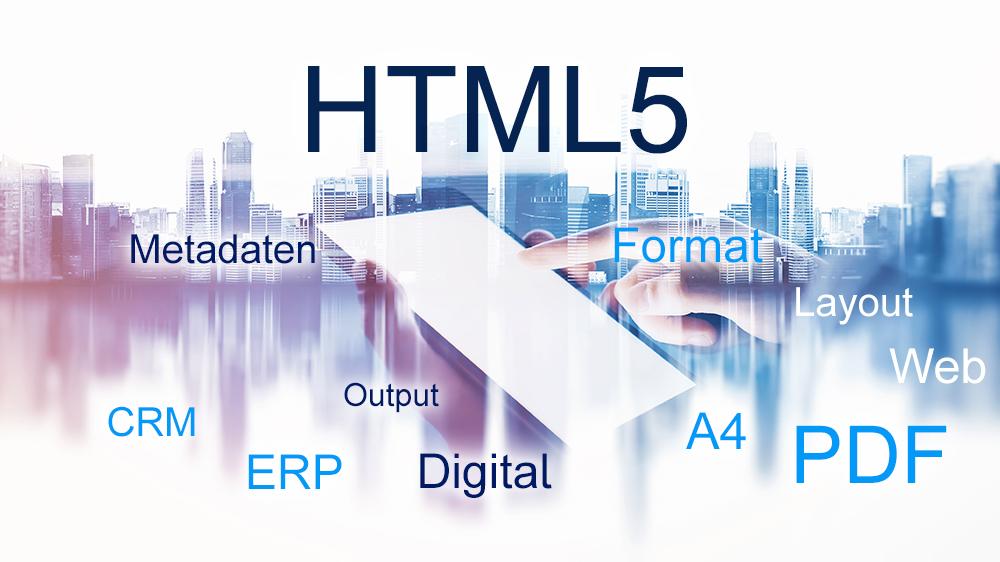Yet due to its extreme compatibility, PDF with all its different specifications is a recognized international standard and has firmly established itself as the format for long-term, read-only archiving (PDF/A) and the creation of barrier-free documents. Ultimately the specific situation will dictate the choice between AFP and PDF. A company that wants or needs to archive large quantities of documents in their original layout may choose to output them in PDF or PDF/A, thus avoiding the necessary conversion from AFP to PDF.
It supports reformatting, converting page- to text-oriented formats; extracting single data items (including retrieval of invoice items); and building tables of contents and index lists.
Moreover, with HTML5, even audiovisual elements, Web links and charts can be embedded. This creates not only multi-channel-capable documents, but also intelligent documents that offer users added value beyond mere text display.
The development of HTML5 represents a quantum leap in functionality. The new version has become the “language of the Web” and can also be used as a print version with relatively little effort. Unfortunately, HTML5 and PDF are still seen as competitors, especially when it comes to preserving structural information. That assumption could not be more wrong. After all, HTML5 is the lowest common denominator for channel-independent display and output of documents. PDF will not disappear. Quite the opposite: each format depends on the other. In document processing, for example, HTML5 can be the preliminary step for PDF, because PDF/A will continue to be needed for certain processes such as archiving.
Put An End To The “Religious Ears!”
Speaking of multi-channel output management, sooner or later the discussion will turn to yet another format that is gaining ground: XSL-FO. This XML-based mark-up language has one major advantage over HTML: It not only supports creation and output of documents regardless of pages size, it also features a number of sophisticated functions for page design. XSL-FO enables generating premium print products. In contrast to the XHTML/HTML format, which is particularly good for browser applications, XSL-FO is used especially for printing and archiving documents with many pages.
That leaves XML, the ISO-standardized markup language that has become the standard for transferring data from specialist applications to a company’s output instance. XML technologies are now so advanced that no special software components are needed for data extraction. This also applies to the other formats.
Whether the output format is AFP, PDF, HTML5, or XSL-FO, current IT solutions now support the popular standards used in modern output management so completely that it should be no problem for a company to develop and establish an overall architecture that supports every scenario, and even keep costs manageable.
It’s time to put an end to the war over what the best format is. The decision is a basic one, namely the company’s strategic orientation for document processing:
- Which communications channels will play a role in future and to what degree?
- What are the expected document volumes?
- How will the ratio of physical to electronic documents evolve over time?
The answers to these questions will determine which formats make sense and when. They all have strengths as well as weaknesses. It’s the application scenarios that are important. They alone determine the relevance of any given format for output management within a company.







